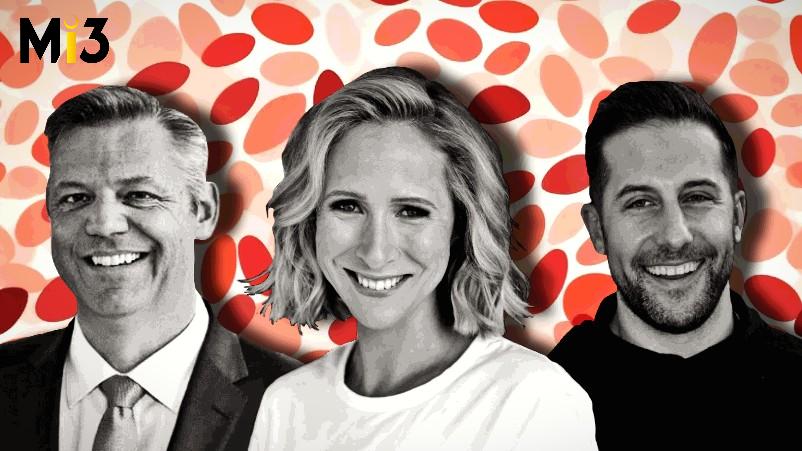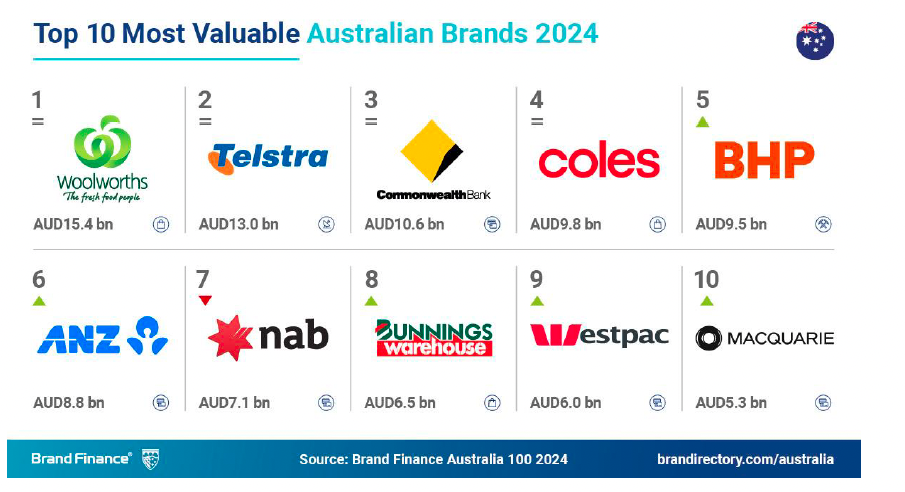Privacy, baby pics and deepfake avoidance: Why an ASX-listed photo sharing app got James Warburton’s attention – Tinybeans CEO on subscriber, brand-performance and revenue rethink

What you need to know:
- After years languishing under $0.08 a share on the Australian Stock Exchange with a lack of momentum and marketing, new parent photo-sharing app Tinybeans has spent the past year rebuilding its product, brand positioning, ad revenue and subscriber model and pricing to find a way back to profitability and growth for the photo sharing app.
- Two new non-executive directors joining the business in the last month – former Seven chief, James Warburton, and US-based former co-founder of fatherly, Mike Rothman, are seen as operators with deep media and category experience that can help fuel that market plan.
- Having secured 92 per cent of its existing subscribers after an 87 per cent price increase, the business is recalibrating to drive subscriptions as its core revenue stream and lessen reliance on a tanking ad revenue line.
- It hasn’t forgotten ad revenue, and has also made improvements to the tech and team on this front after seeing a 72 per cent drop in ad revenue in the first half and years of declining dollars. But CEO, Zsofi Paterson, insists it won’t pursue a publisher-led strategy.
- Instead, a rebrand and new marketing game plan will capitalise on through the funnel activities, influencer and brand / event partnerships to find new subscriber growth after several years of flat customer numbers.
- The early shoots are there, with Tinybeans reported a record quarterly revenue in Q4 of US$1.52m, 53 per cent of which was subscriptions.
Rebirthing unit
Zsofi Paterson joined Tinybeans a little over 12 months ago as CEO, having been an avid user of the photo-sharing app for several years. Yet even she admits being “a bit horrified” when first considering an 87 per cent subscribe price hike to $75 per year, or $7.99 per month.
But with plummeting advertising revenue and minimal future pipeline, recalibrating the freemium model and lifting pricing were necessary steps taken to rebuild a market model that can return the ASX-listed company to profitability and growth.
“I was coming in with a very clear view around product, content and branding initiatives I thought needed to happen – improving product experience, UI / UX, and really thinking about the content strategy, which was very broad at that stage as a spray-and-pray approach,” Paterson tells Mi3.
“What I didn’t realise was the business was in a tougher financial spot than I thought it was. A company that historically generated a good percentage of its revenue from ad sales, when I came into the business, [it] didn’t have a pipeline that gave us much confidence that there was a forward book… There was a lot to do.”
The challenges and shocks Paterson squared up to in her first year as chief haven’t dented her belief Tinybeans has something valuable and worth the money for customers. With 93 per cent of existing local and US users recommending the app to family and friends, it appears the customer base thinks so too.
Fast forward to July this year, and the 12-year-old business has managed to retain 92 per cent of its paid subscriber base, reporting record quarterly subscription revenue of US$800,000 (Q4 FY23: $580,000), 53 per cent of the company’s total quarterly revenue of US$1.52m. Subscriber numbers are largely flat at 51,200.
It’s inching towards improvement, and contrasts with a 47 per cent H1 FY24 revenue drop to US$2.76m. Ad revenue was the major hole in those figures, down 72 per cent from US$3.83m to US$1.08m, leaving Tinybeans with a net loss of US$2.46m. Only 15 per cent of advertising was derived from the app, which suffered from poor ad units, low CPMs largely via programmatic channels.
Replacing the sales team and product rebuilds have since been undertaken by Paterson, and Tinybeans saw improved quarterly ad sales of US$700,000 in Q4. Campaigns have stretched across entertainment, travel and toy categories and seen national and international brands including NBCU Peacock, Paramount Plus, state travel bureaus Oregon Mt Hood and Visit Myrtle Beach as well as toymaker Little Tikes.
“The short to mid-term outlook was one of those big initial shocks. We had made some efforts to improve our proposition for brands and advertisers,” says Paterson. “We did an exercise to strengthen our offering, really improve our creative proposition, make sure campaigns deliver on goal, and we have been doing that for 6-12 months. We have had some nice advertisers come in and either take another look at us or spend for the first time.”
Privacy pull mechanism
But relying on ad revenue is not the core strategy. “Tinybeans will always have a valuable way to help brands reach our highly engaged, valuable user-base in appropriate ways. But we will not be pursuing the publisher-led strategy,” Paterson says. “I’m doing everything I can to grow subscription revenue, so we can reduce our reliance on ad revenue that does sit alongside our core product offering.”
The strategic opportunity for Tinybeans is sizeable. There are about 3.7m births in US annually, an existing and strong market for the business, plus 1.3m in AU, UK, Canada and NZ. On average, 1,500 photos are taken in a child’s first year. Even more significantly, 31 per cent of parents do not discuss their children at all on social media, making a private sharing app a highly desirable alternative. Of course, there’s competition – 7,819 parenting apps in Google Play store in Tinybeans’ last count.
But the app has strong brand equity and foundations, even if it lost momentum over recent years and neglected the local market to pursue the US. Tinybeans has been reaching 4m parents and families reached every month across app, web, email and social media, with average usage stretching four years.
“The reason I was so interested in this business opportunity is because once we acquire someone and they start to use us, they use Tinybeans for years. First they invite their mother then brother, sister, father, to follow along their kid’s journey. In addition, they recommend and refer to friends and family who have babies,” Paterson comments. “We have very high retention, referral and engagement rates. The focus is getting our brand out and more people giving us a try.”
As the company put it in last year’s financial report: “While Tinybeans boasts enviable consumption subscription metrics, the user base is largely an under-monetised offering. There’s considerable opportunities for product expansion, and to become a global consumption subscription platform for parents and their families in the early years of parenting”.
Paterson acknowledges she’s a long way off the lofty ambitions of growing Tinybeans’ annual revenue to $25m with over 50 per cent from subscribers, 10m active monthly users, and securing one in four first-time parents using Tinybeans in the US. Getting one in 10 in Australia would mean “we’d be in a very good position”.
But she’s making ground. As well as core product improvements, another milestone was rolling out its new website, go-market and refreshed visual brand identity in January.
“Tinybeans has nice brand equity, but at the time, if you looked at an email versus app versus social, it all looked different, there wasn’t a clear and unified brand presence and profile. I came in knowing they all needed work” she says.
Another challenge Paterson cites is one many CMOs will sympathise with: A team doing a lot of things but not aligned to where it needed to go.
“I needed to build a really clear view on core strategy, then shift everyone to be working towards that collectively. The company is 100 per cent global and remote, so that also had some challenges and quirks,” she says.
When I joined the company, it was spending a fraction – call it $15k per month – on paid marketing, which was literally Google acquisition. That was it. Once we had a bit of cash in the bank, I broadened the team so we can think more strategically and creatively about how we go to market.
Bigger baby steps
Tinybeans first launched in 2012 then debuted on the ASX in 2017. It was a different time in market, when earlier stage digital businesses were listing to secure abundant capital.
“They did a good job of building a brand around it, and a highly engaged, passionate and loyalty user base. Then the company decided to try to crack the US market – fair enough. They shifted a lot of people, resource, strategy and dollars to the US market. Really it’s been sitting almost dormant for 5-6 years in Australia,” says Paterson.
“We’re globally available app on the app stores, but if you’re not marketing it and talking about it, how is anyone meant to know about it? That’s a big part of this. I see it as completely low hanging fruit.”
Which brings us to Paterson’s marketing plans. “When I joined the company, it was spending a fraction – call it $15k per month – on paid marketing, which was literally Google acquisition. That was it,” she explains.
“Once we had a bit of cash in the bank, I broadened the team so we can think more strategically and creatively about how we go to market.” Hires include brand and partnership management, plus capability across data and analytics.
Another diversification strategy is events. Tinybeans did its first Baby Expo in July in Sydney, sitting alongside brands right in the trimester three group of its core consideration set. In addition, it’s struck an influencer agreement, albeit more focused on the US, focused on micro influencers who can create user-generated content that diversifies getting the message out there.
An plethora of partnerships are earmarked too, stretching from marketing and promotion deals to product partnerships, content and affiliate. The first was struck in June with US-based Babylist, a digital parenting platform with 9 million consumer base making purchases through its baby registry, app, ecommerce store and product guides and US$400m in annual revenue. The partnership aims to open up Babylist’s audience to Tinybeans brand awareness, audience and subscribers, and Paterson says the pair will work together to create incremental revenue.
“We can’t afford to be all trying to reach the customers ourselves individually. It’s a way we think and hope will be cost effective to get in front of the right people,” she says.
Given the strength of recommendation and referral, Tinybeans is also prioritising a gifting capability to launch in the next quarter, supported by marketing and influencer programs.
Early mover advantage
About 60 per cent of Tinybeans subscribers are acquired before a baby is two months old, providing a more focused acquisition target for the team. The customer sweet spot is parents, typically mothers, who are educated, working with high household income and making really intentional decisions about how they want to save, curate, and share their kids’ moments.
Which is why Paterson isn’t so worried about hiking the subscription price up after all. “When I came in, I was a bit horrified that there was such a material price increase pushed through. But when I think about it, that enables an entire family to share photos seamlessly and safely,” she says.
“I do think we probably just need to do a better job of also helping people understand that as part of the value proposition. I think about it from my personal standpoint: I’m on the app every day, plus my mum, my 94-year-old grandma who lives remotely, and my brother is on every week. It helps make the cost feel far more palatable when you think about the joy, benefit and connection it brings to people over the course of a lifetime of that year.”
Then there’s the privacy narrative Tinybeans fits so nicely into. Nine in 10 subscribers say they started using Tinybeans due to the privacy factor.
“Every other day you’re reading a story around privacy, sharing kids’ photos on social media and deepfake concerns. Thematically it’s more relevant than ever, we just need to spend more effort and energy on telling our story and help consumers understand the value proposition of using us,” says Paterson.
“We have a product that works and does a very good job once people start using it. The job now is to just grow the user base around what exists today.”
Progress vs. perfection
Paterson admits everything is a trade-off. “I wish I was sitting with unlimited resources but I just have to be so disciplined and careful. You can get really carried away – myself included – with trying to perfect something. It’s look, it’s actually good enough – let’s just use it and get on with it,” she says.
“We have done a lot of work in the last year to get the underlying tech and product better and stable. While we will always continue to improve and optimise that, we’re really focused on things that will move the needle from a growth perspective.”
Paterson also believe putting the emphasis on marketing over more product innovation or diversification will see those stubbornly flat paid subscriber numbers start to rise. “It’s why we are upweighting and investing still very strategically – we’re not flush with cash. We’re trying to be as effective with our dollars as we can.
“I do believe there hasn’t been the right marketing strategy or mix over the years – I think they were doing a good job of it 5-plus years ago, but I think over the last 3-4 years it hasn’t been happening. So it has been a flat user base. We basically acquire the same number we churn. Now, churn is very low, so it gives you an understanding of what acquisition is happening.”
Tinybeans is a business that has incredible potential to grow and scale given the issues of privacy that will continue to be at the forefront of people’s minds.
The Warburton effect
It’s for these reasons Paterson is stoked to have former Seven chief James Warburton sign-on as a non-executive director. As well as a cash fee in line with other non-exec directors on the board, Warburton has the right to acquire up to 10m options in Tinybeans over the next 18 months – providing he stays on for a minimum of two years.
Describing Warburton as “an operator”, she aims to tap the credentialed media executive’s deep local network. “We think he will be very impactful in helping us to grow our brand presence, telling our story more in the media and via brands,” she says.
For his part, Warburton tells Mi3 he’s excited about the opportunity for Tinybeans. “It is a business that has incredible potential to grow and scale given the issues of privacy that will continue to be at the forefront of people’s minds,” he says.
“My interactions with the chair and chief executive have been impressive, and I look forward to proactively assisting to maximise the return for all shareholders.”
A second board win last week was recruiting co-founder and former chief of US digital parenting lifestyle brand Fatherly, Mike Rothman. With deep category experience, Rothman has done a lot of private investing, advisory and has a good network across media, tech, investors in the US market and is taking on another complementary exec role in a subscription business overseas.
“We’re in a time where we’re having to reassess our operating model, strategy and tactics regularly. Having people who can help me work through things like that will be very helpful,” says Paterson. “Warburton and Rothman are both operators, which I like – having a board with NEDs that have at least a good portion of their careers as operational executives is very important and helpful.”





